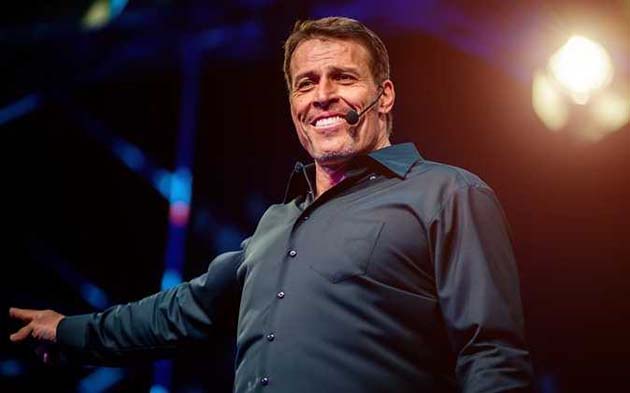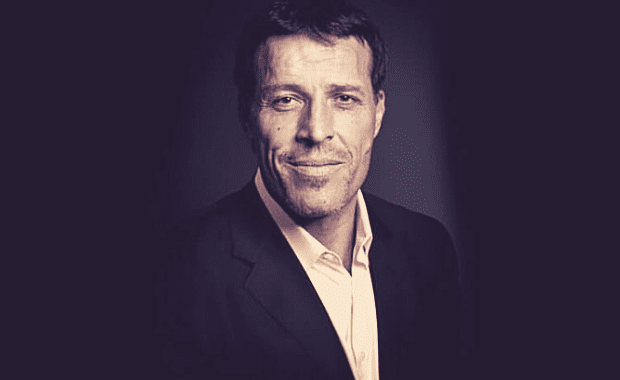Success Advice
Tony Robbins Top 10 MUST Read Books to Expand Your Mind

Tony Robbins is arguably one of the top Speakers and Life Strategists of this decade and has worked with some of the world’s top leaders and high level entrepreneurs to optimize their life and business performance. Tony spends a lot of time in between his sold out events and Fortune 500 meetings reading the best content he can get his hands on to feed his mind with the most profound knowledge and strategies so he can become a person of value.
Tony Robbins often says that reading a book is like compiling decades into days. Why not extract the lessons and experiences of others and dump them into your mind from the great reads that are available out there for you.
Here are 10 books that Tony Robbins recommends! Watch the video below:

Tribe of Mentors by Tim Ferriss
Four-time #1 best-selling author Tim Ferriss tracks down more than 100 eclectic experts to help him, and you, navigate life. Through short, action-packed profiles, he shares their secrets for success, happiness, meaning, and more. No matter the challenge or opportunity, something in these pages can help.
Man’s Search for Meaning by Viktor Frankl
Psychiatrist Viktor Frankl’s memoir has riveted generations of readers with its descriptions of life in Nazi death camps and its lessons for spiritual survival.
At the time of Frankl’s death in 1997, Man’s Search for Meaning had sold more than 10 million copies in twenty-four languages. A 1991 reader survey for the Library of Congress that asked readers to name a “book that made a difference in your life” found Man’s Search for Meaning among the ten most influential books in America.
Principles by Ray Dalio
Ray Dalio, one of the world’s most successful investors and entrepreneurs, shares the unconventional principles that he’s developed, refined, and used over the past forty years to create unique results in both life and business—and which any person or organization can adopt to help achieve their goals.
Living Forward by Michael Hyatt & Daniel Harkavy
New York Times bestselling author Michael Hyatt and executive coach Daniel Harkavy show us how to design a life with the end in mind, determining in advance the outcomes we desire and path to get there. In this step-by-step guide, they share proven principles that help readers create a simple but effective life plan so that they can get from where they are now to where they really want to be–in every area of life.
Start with Why by Simon Sinek
START WITH WHY shows that the leaders who’ve had the greatest influence in the world all think, act, and communicate the same way — and it’s the opposite of what everyone else does. Simon Sinek calls this powerful idea The Golden Circle, and it provides a framework upon which organizations can be built, movements can be led, and people can be inspired. And it all starts with WHY.
As a Man Thinketh by James Allen
Widely considered the greatest self-help book of all-time, As a Man Thinketh reveals how our thoughts determine our character, circumstances, health, appearance, and achievements. The choice is ours: either master our thoughts to create the life we want, or remain mired in frustration and failure.
The TB12 Method by Tom Brady: How to Achieve a Lifetime of Sustained Peak Performance
After using his methods for over a decade, Brady believes that the TB12 approach has made him—and can make any athlete, male or female, in any sport and at any level—achieve their own peak performance. With instructions, drills, photos, in-depth case studies that Brady himself has used, as well as personal anecdotes and experiences from on and off the field, The TB12 Method is the only book an athlete will ever need, a playbook from Brady himself that will change the game.
Getting Everything You Can Out of All You’ve Got by Jay Abraham: 21 Ways You Can Out-Think, Out-Perform, and Out-Earn the Competition
A trusted advisor to America’s top corporations and recognized as one of today’s preeminent marketing experts, Jay Abraham has created a program of proven strategies to help you realize undreamed-of success!
This book focuses on helping you spot the hidden assets, overlooked opportunities, and untapped resources around you, and gives you, and gives you fresh eyes with which to see and capitalize on them. You’ll also learn how to adapt and apply these tools to your unique circumstances to maximize your income, influence, power, and success.
Emerson: Essays and Lectures
Tony Robbins says he was hugely inspired by Emerson’s essays on the subject when he was beginning his career as a coach. Tony said “Self-reliance is a theme all human beings, especially those living in the Western world, have to fully understand if they’re going to do well in a world that’s changing constantly”.
Linchpin by Seth Godin: Are You Indispensable?
Few authors have had the kind of lasting impact and global reach that Seth Godin has had. In a series of now-classic books that have been translated into 36 languages and reached millions of readers around the world, he has taught generations of readers how to make remarkable products and spread powerful ideas. In Linchpin, he turns his attention to the individual, and explains how anyone can make a significant impact within their organization.
Here is the podcast interview I did with Tony Robbins. Tony absolutely rocked it and I’m sure you will enjoy this audio.
Did You Know
How Skilled Migrants Are Building Successful Careers After Moving Countries
Behind every successful skilled migrant career is a mix of resilience, strategy, and navigating systems built for locals.

Moving to a new country for work is exciting, but it can also be unnerving. Skilled migrants leave behind familiar systems, networks, and support to pursue better job opportunities and a better future for their families. (more…)
Life
10 Research-Backed Steps to Create Real Change This New Year
This New Year could finally be the one where you break old patterns and create real, lasting change.

Every New Year, we make plans and set goals, but often repeat old patterns. (more…)
Change Your Mindset
The Silent Skill That Makes People Respect You Instantly
What truly earns respect and why most people go about it the wrong way

Everybody craves respect but not everyone earns it. Some people believe that a title, years of experience, or a position of authority automatically entitles them to respect. (more…)
Entrepreneurs
The Essential Skills Every Entrepreneur Needs In 2026
Success in the digital age isn’t about luck. It’s about mastering the skills that separate dreamers from doers.

When I was 22 years old, I started my first side hustle as a ghostwriter. (more…)
-

 Did You Know4 weeks ago
Did You Know4 weeks agoThe Success Patterns You Inherited (And Didn’t Notice)
-

 Entrepreneurs4 weeks ago
Entrepreneurs4 weeks agoThe Essential Skills Every Entrepreneur Needs In 2026
-

 Change Your Mindset3 weeks ago
Change Your Mindset3 weeks agoHow to Turn Your Mind Into Your Greatest Asset (Instead of Your Enemy)
-

 Change Your Mindset3 weeks ago
Change Your Mindset3 weeks agoThe Silent Skill That Makes People Respect You Instantly
-

 Life2 weeks ago
Life2 weeks ago10 Research-Backed Steps to Create Real Change This New Year
-

 Tech2 weeks ago
Tech2 weeks agoWhat’s in a Name? How to Get Your Domain Right
-

 Did You Know1 week ago
Did You Know1 week agoHow Skilled Migrants Are Building Successful Careers After Moving Countries































1 Comment